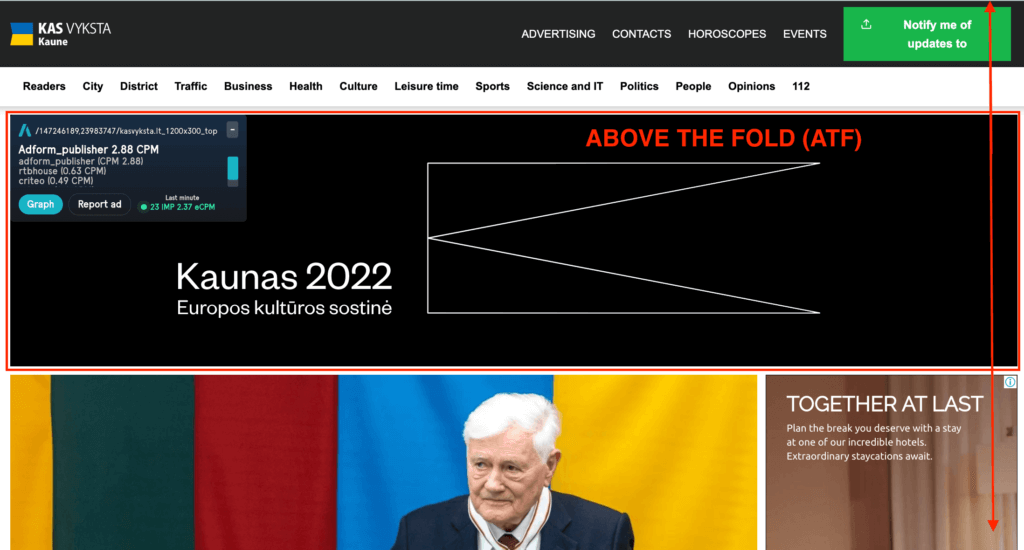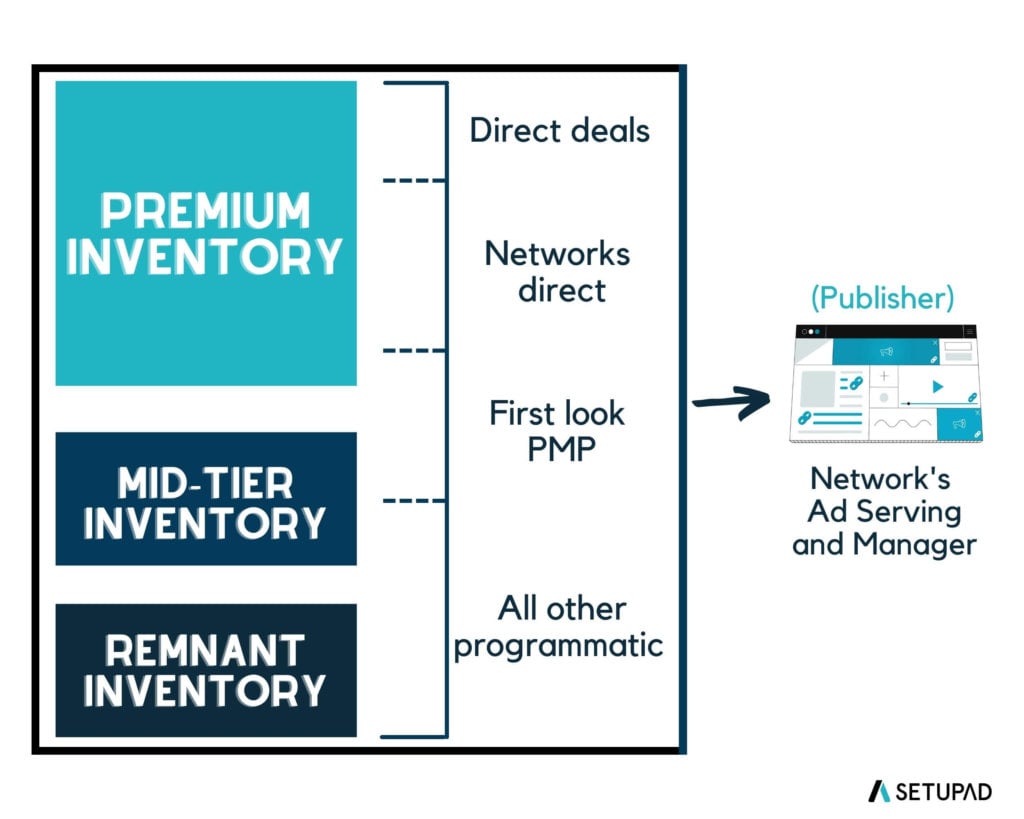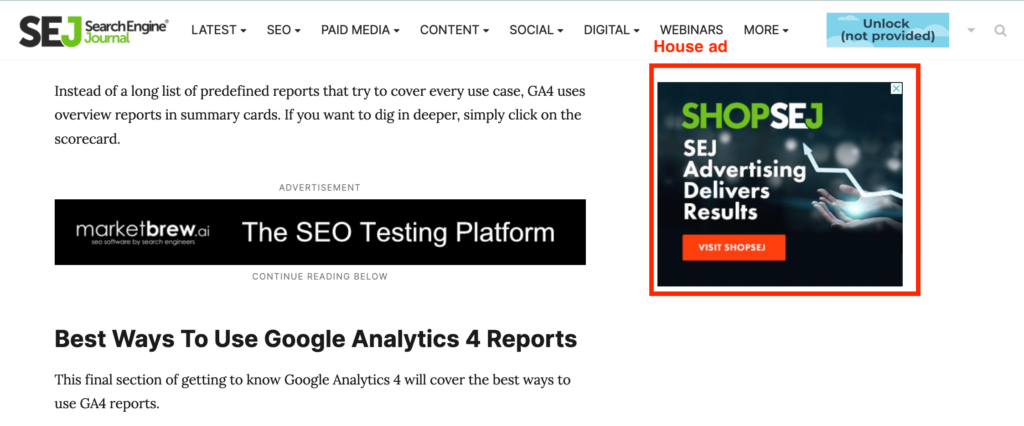Tips to Efficiently Manage Unsold Ad Space
Remnant inventory is the leftover ad space after the premium deals. If you’re a publisher, you probably have ad spaces to offer, but if you’re an advertiser, you’re probably looking for an ad space to use.
Unsold ad spaces are usually sold at a lower price, but it doesn’t mean that they’re less valuable than premium ad spaces.
In this article, you’ll learn more about remnant inventory, its benefits, how it differs from premium inventory, and how to manage and monetize your unsold ad spaces.
What is Unsold Ad Inventory (Remnant Inventory)?
Unsold ad inventory, also known as remnant inventory, is the advertising space publishers couldn’t sell through direct deals, like preferred deals.
For example, your website is expected to sell 1,000,000 ad impressions in the following month. However, you made an agreement to sell only 800,000 of these impressions, which leaves you with 200,000 unsold ad impressions (remnant inventory).
Publishers want to monetize every ad impression they have. Therefore, it’s important to effectively manage this leftover ad inventory. This ad space is often sold for a lower cost through ad networks and real-time bidding (RTB) ad exchanges.
What is premium ad inventory?
Premium ad inventory is considered higher quality and more expensive than other ad spaces. This premium inventory is located above the fold and initially reaches a bigger audience.

The viewability of this advertising spot is its greatest benefit. Viewability and exposure are two very important factors, as they catch the users’ attention and lead them to further investigate the content shown in the ad.
Because of these benefits, premium inventory is more expensive.
Difference between premium and remnant inventory
| Premium Ad Inventory | Remnant Ad Inventory | |
| What Is It? | Ad spaces that publishers sell directly to advertisers. | Leftover ad spaces. |
| What Type of Advertisers Use It? | Mainly used by large companies and big brands. | Beneficial for small or medium-size advertisers who want to reach their target audiences in every way possible but is used by large ones as well. |
| Who’s Involved? | Publisher, advertiser, and their ad servers. | Publisher, advertiser, ad networks, SSPs, and ad exchanges. |
| Monetization Opportunities | Publishers can offer customized targeting options and ask for a better CPM. | Often remnant ad spaces are sold in bulk through real-time auctions, and CPMs are set to industry standards. |
What are the Reasons for Remnant Inventory?
There are 4 main reasons for remnant advertising space:
- Premium ad inventory prices are too high, which leaves leftover ad spaces.
- Low-quality ad inventory.
- Lack of advertising demand during certain periods (seasonal trends).
- Ineffective ad setup. For example, ad setup generates too many impressions per user, and advertisers aren’t willing to purchase ads in such large volumes.

Remnant Advertising Pros and Cons
| Remnant Advertising Pros | Remnant Advertising Cons |
| Low cost and a high reach. Remnant ad spaces can provide big exposure for a relatively low price. | Limited customization. As remnant ads are usually sold programmatically, fewer ad formats and customization options are available compared to direct channels. |
| Doesn’t require a long-term commitment. There is no penalty if advertisers stop their campaign midway. | Extra fees. Many parties that are involved in the programmatic auction, like SSPs and DSPs, add up to the fees and ad serving costs (the so-called adtech tax), resulting in less revenue for the publisher. |
| No pre-pay. Remnant advertising doesn’t require advertisers to pay upfront. | Lower ad revenue. Remnant inventory is sold for a lower price than premium ad inventory. |
| No unsold impressions. Publishers can almost always find demand for their ad space. | Malvertising. A high percentage of malvertisers can slip through filters when ad impressions are sold programmatically. |
| No direct relationships required. Beneficial for small publishers who usually don’t have established relationships with advertisers. | Less control. Advertisers usually don’t have control over where their ads will appear. |
| Control. Publishers can exclude low-quality advertisers by setting up programmatic floor prices. |
How to Manage Remnant Inventory
Publishers want to monetize every ad impression. Therefore, it’s important to effectively manage leftover ad inventory.
Here are 6 options to help you with remnant ad inventory management:
- Display house ads. Promote another part of the site by increasing awareness of other products or services you offer. A good tip is to consider what sections of your site earn you the most revenue and promote them.

- Use header bidding. Allows multiple bidders to simultaneously participate in a real-time bidding auction, pushing competition up and generating more ad revenue for the publisher.
- Try preferred deals. In this programmatic deal, publishers allow advertisers to buy the inventory at a negotiated fixed price, which is likely to be higher than in real-time bidding.
- Sell on private marketplaces. A selected group of advertisers and buyers participate in an RTB environment, where the publisher sets a minimum CPM price and invites buyers to bid on their inventory.
- Enable targeting. Allowing targeting for ad units assures advertisers that their ad campaigns will reach their target audience. By default, targeted ad units with a good ad viewability score are worth more.
- Set up backfill to sell remnant ad impressions. With backfill, different ad networks fill each other’s unsold inventory as per needs, and the revenue is shared respectively. If you need help setting up a backfill, Setupad team can do it for you.
How to Fill Remnant Inventory
In case you’re experiencing difficulties filling your remnant ad spaces, here are 4 tips:
- Give bonus impressions. If you can’t make use of the remnant inventory, reach out to advertisers directly or try to improve your existing relationships and offer them extra ad inventory.
- Cluster your audience into segments. Advertisers want to know their audience, therefore segmented inventory allows advertisers to learn more about user traits.
- Optimize your price floors. Low prices can increase ad fraud, but high prices can leave unfilled impressions. Price floors require constant monitoring and revision to assure a healthy balance between profitability and fill rate. Contact Setupad for advice on the most effective price floor management.
- Allow demand-path optimization. With this technique, publishers and their SSPs can better understand the buying behavior of advertisers and offer direct deals or referred deals to frequent buyers at a set price. It also helps to better evaluate the performance of various ad placements and analyze the buyer’s interest.
Conclusion
Remnant inventory can ensure a good yield performance and benefit both publishers and advertisers. Mainly this inventory is sold through RTB auctions, requiring less human interaction than direct deals.
Remnant ad spaces require effective management to reach the maximum potential and fill rate.
If you have any questions, make sure to leave a comment or email us at [email protected].


